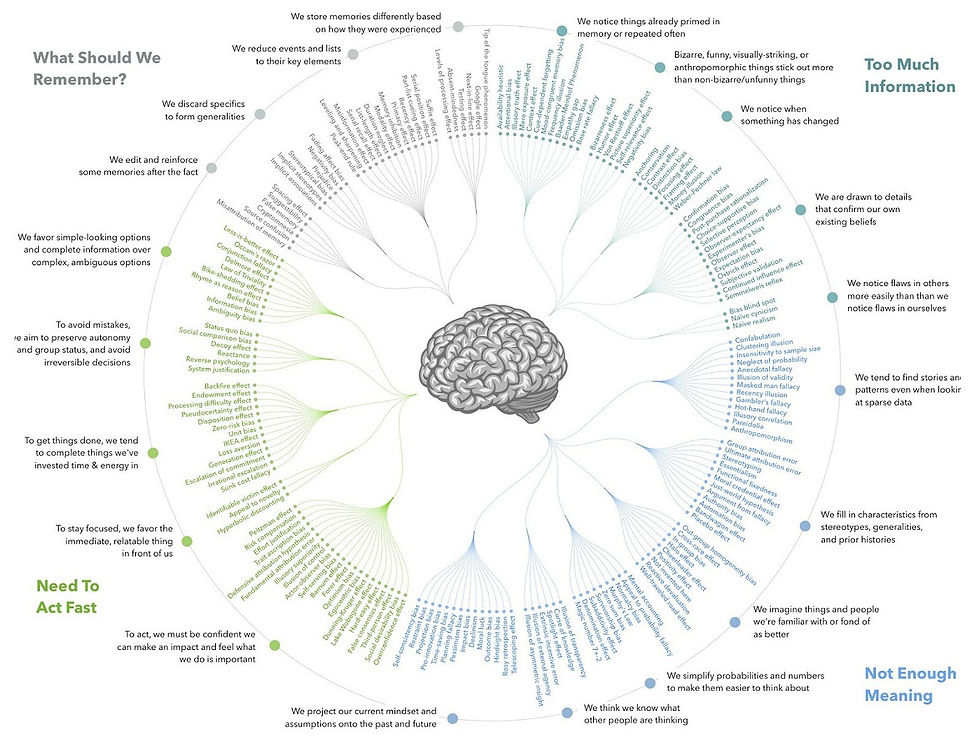Emotional Empowerment
- Katherine Anderson
- Dec 22, 2023
- 4 min read

Emotions are power. Their usefulness comes down to how well you are able to interpret the signals that their feelings provide. Rather than avoiding, suppressing, or fighting your emotions, get curious. Because when you get curious, your thought process moves to an intellectual level, which distances you from the emotion and allows you to think through and process it. You can then work to reframe your emotions. For emotional reframing, try these 5 steps.
Step 1: Experience
When you start to experience an unwanted emotion, particularly those that are strong, lean into them, connecting with them as much as possible.
Step 2: Reconnect
Take time to pause and reconnect with yourself. If you’re in company, feel free to excuse yourself so you can gather your thoughts.
Step 3: Breathe
Connect with your breath. Breathe deeply through your nose and out through your mouth. This will calm your nervous system and pull your focus to the present moment in time.
Step 4: Focus
After pausing and breathing, it’s time to connect with the truth of the emotion and of the situation that triggered it. Focus on simple facts.
Step 5: Get Curious
It's time to get curious. Start asking yourself some questions regarding the situation to step back into logical thought, such as:
"Why has this situation upset me?"
"What story am I telling myself right now?"
"What emotion am I feeling right now and what is it trying to tell me?"
FACTS: EMOTIONAL PROCESSING
Harvard brain scientist, Jill Bolte Taylor, has proven that 90 seconds is all it takes to identify an emotion and allow it to dissipate as you simply notice it.
Within that 90-second space of time, an automatic chemical process occurs which is triggered by a perceived threat. After that chemical process has completed its cycle, any remaining emotional response is a result of thoughts you are thinking that is re-stimulating the stress circuitry, resulting in a repeating physiological reaction
Therefore, the power to move through and overcome your emotional stress response lies in your ability to firstly experience and acknowledge the emotion, then break the stress circuitry through awareness, challenging the need to keep the emotion on line. Consider, that if the emotional response has helped you meet a need, then it has done its job and you can let go and move on.
WELLNESS TRINITY
THE THREE PILLARS UNDERLYING YOUR HEALTH AND WELL-BEING, FORMING A CONNECTED FOUNDATION TO YOUR STATE OF WELLNESS

1. Mental + Emotional
Every aspect of your body, mind and environment are connected. Your mind affects your body and its biochemistry, and the body and its biochemistry affect your mind. Your mental health, state of joy, level of anxiety, stress and emotional stability are huge factors affecting your sense of well-being and your health parameters.

2. Physical + Structural
The degree of structural balance and movement in your physical body can and will impact far more than just how you look and what the scales might say. It is important to address any physical pain in the body from past injury or trauma, and then work to achieve mobility, agility, flexibility and strength to improve overall health.

3. Environmental + Nutritional
It is important to identify what nutritional support the body might be requiring, and environmental factors that may be impacting health. In this way, elements of your lifestyle that are adding to stress or causing imbalances are highlighted and explored. The overall aim is to reinstate balance in the person and increase energy and vitality.
EMOTIONAL STRENGTH
In the popular imagination, emotion is often seen as erratic, unpredictable and a liability. Further, society has fallen into a damaging habit of categorising emotions as either 'good' or 'bad'. This encourages you to chase the 'good', commonly leading to dis-ease and addiction.
Think about the highly prevalent dopamine-hit addiction we see via social media scrolling! Equally, society shuns the 'bad' emotions, which tends to lead to a lack of emotional intelligence and processing. In reality, all emotions have a purpose; they are necessary to guide you through life and are meant to be experienced as part of the richness of life
Dismissing the value of emotion is therefore at odds with how human feelings actually work, both interpersonally and evolutionarily. As a society, “we believe emotional strength is not about how you manage your emotions, but about not having any,” said the psychologist Guy Winch. “That’s science fiction, and it’s just not how we are. Emotional strength is about the management.”
As a key component to balance and wellness, let's dive into the topic of emotional strength for heightened health.
Rationality & Emotion
Neuroscience plays a huge role in governing perceptions of reality and therefore how we think and feel about events in our life. It is important to be aware of factors that influence emotions, including subconscious underlying bias. This is explained by the concept of cognitive bias, which is a systematic pattern of deviation from norm or rationality in judgment.
Individuals create their own "subjective reality" from their perception of the input. An individual's construction of reality, not the objective input, may dictate their behaviour in the world. Thus, cognitive biases may sometimes lead to perceptual distortion, inaccurate judgment, illogical interpretation, or what is broadly called irrationality. See the Cognitive Bias Codex below, a diagram demonstrating the extraordinary extent of the many cognitive biases we experience.
THE COGNITIVE BIAS CODEX

Cognitive Bias Codex. Categorisation by Buster Benson. Algorithmic design by John Manoogian III (JM3). Data by Wikipedia.
If you feel like you need additional emotional support and guidance, you can book a Kinesiology and Coaching session with Katherine Anderson.

Comments